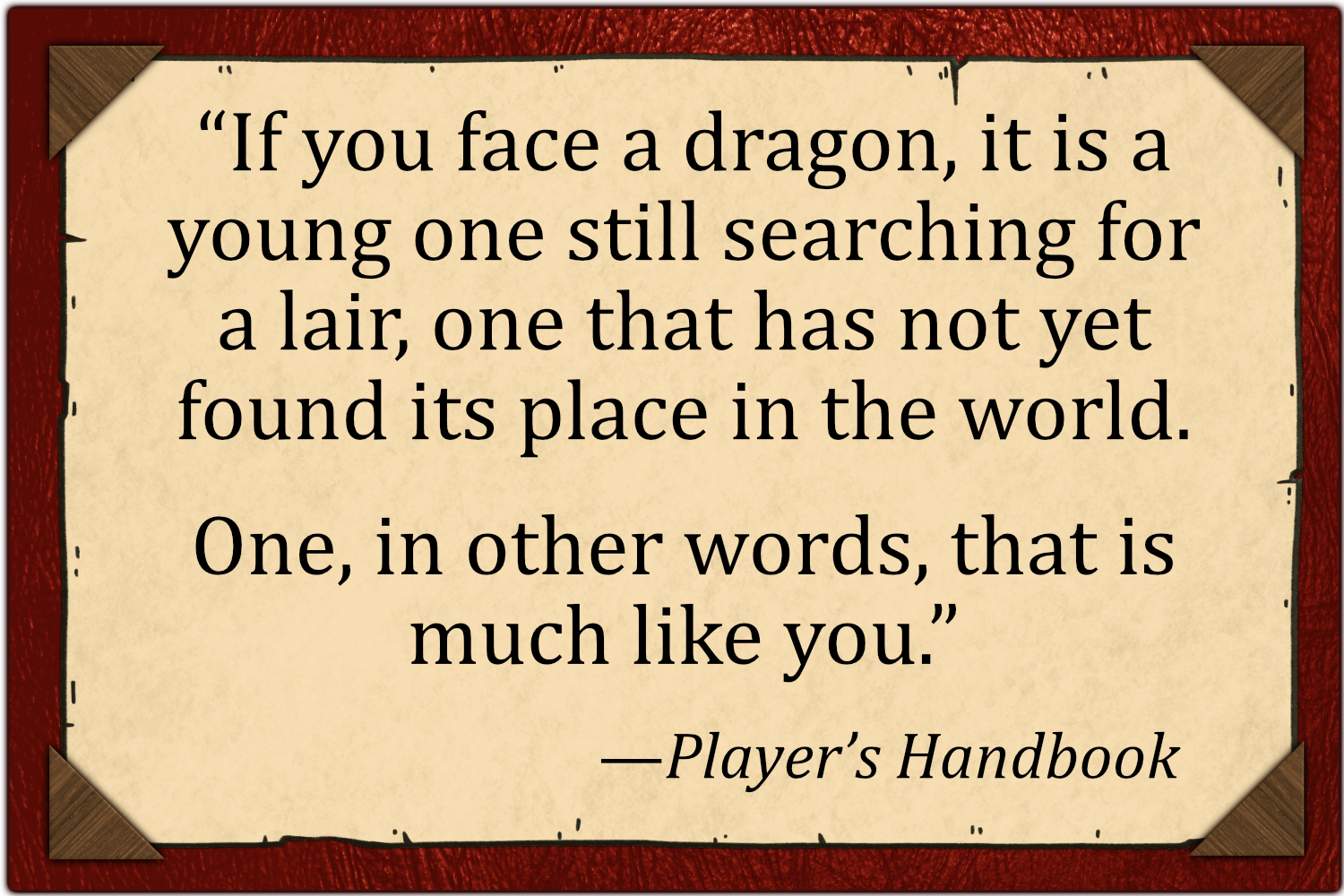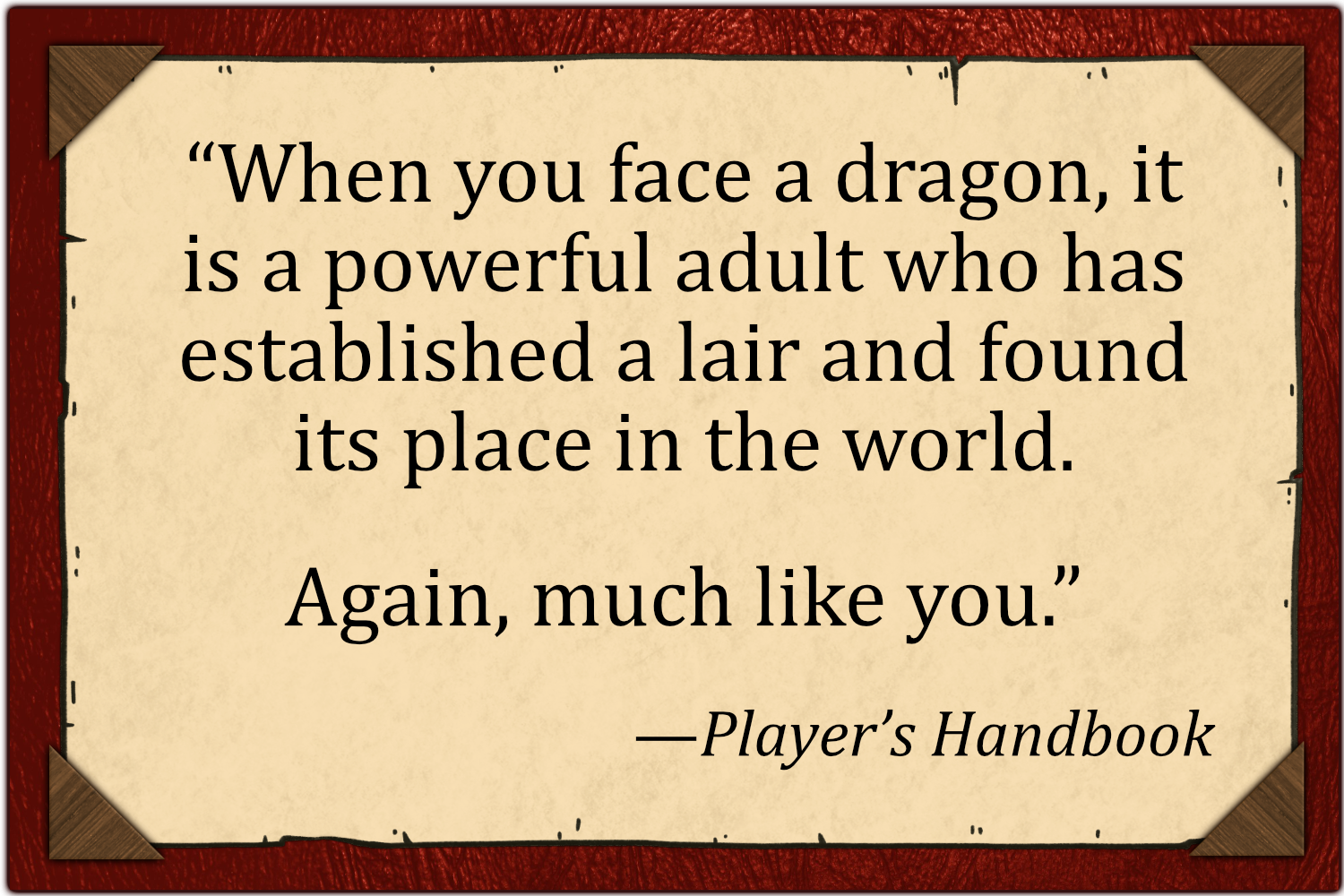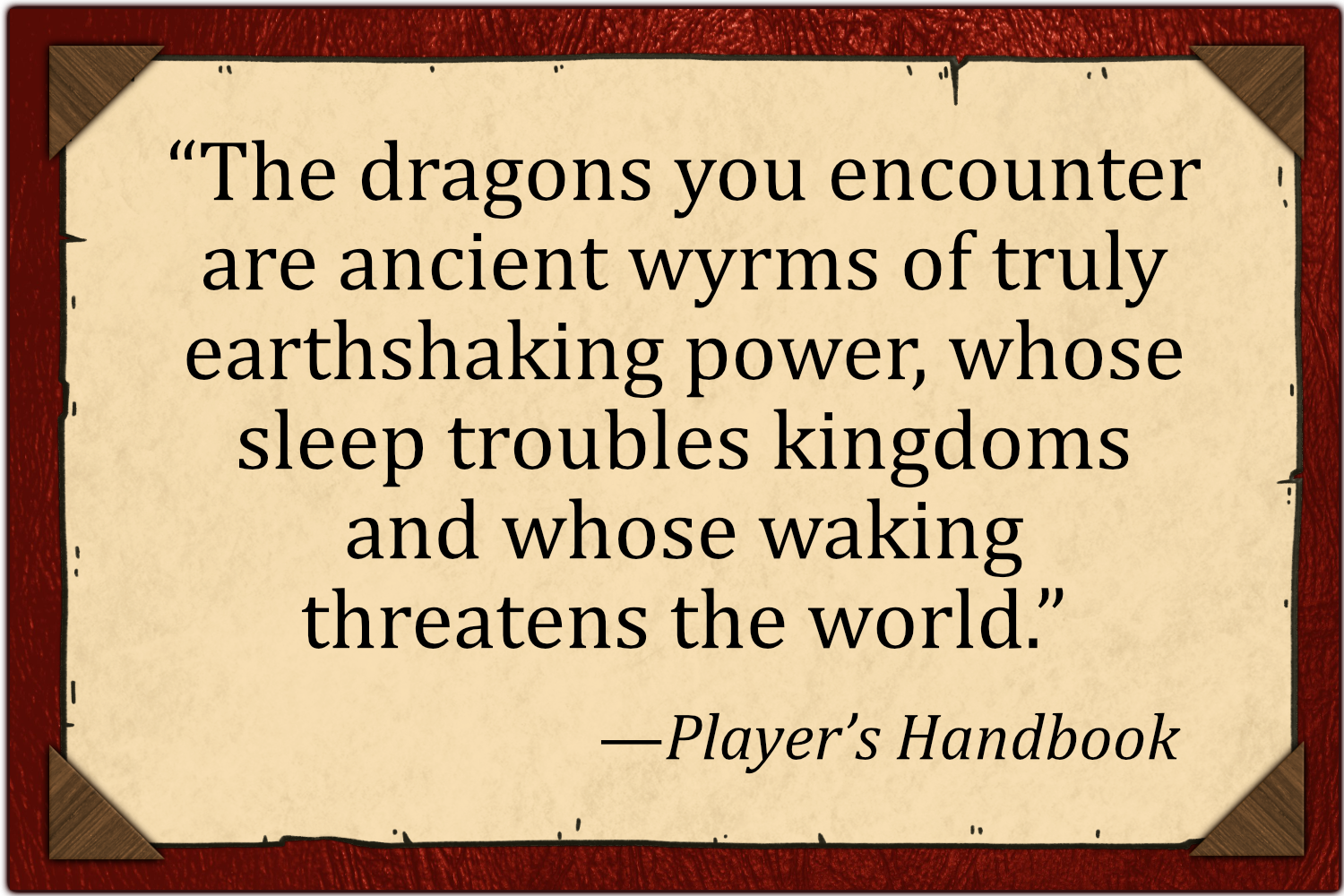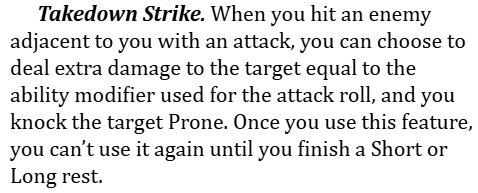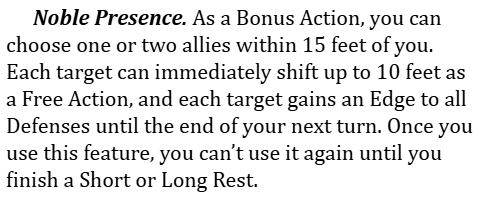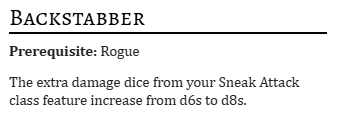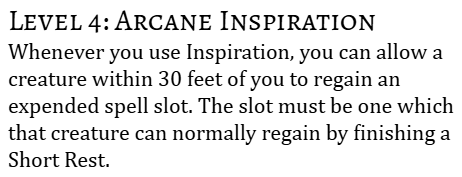Designing 4ever: Tiers of Play & Character Features
Estimated read time: about 14 minutes
The train of Project 4ever continues chugging along! In today’s discussion we’re going to tackle some of the mechanical and narrative design principles behind the Tiers of Play.
While the Tiers of Play don’t really have rules of their own in base 5e, they’re helpful to describe the space that the heroes occupy within the story and the world. In Project 4ever, I like to think of them in the following ways.
Journeyman Tier
As an adventurer of this tier you are at the beginning of your career as a hero. Yet even at this outset, you are someone markedly different from the people around you, with talents and skills greater than those of common folk. The Player’s Handbook (4e) uses the phrase, “...and some hint of a great destiny that lies about you.”
This is the point in time where you choose your Class, and soon after, your Subclass. Most of the features and abilities you get are things that you’ll have your entire career, they’ll just improve from here on out.The equipment you use is largely mundane or perhaps minorly magical.These fundamental choices define the tools available to you in solving the problems that arise; relatively minor threats with perhaps a small town or village at stake.
Heroic Tier
As the Player’s Handbook (5e, 2014) indicates, this is where you “come into your own”. It’s one of the tiers of play that sees the most play—some would even say, the best play. You get access to powerful new abilities and spells, some of which are only usable once or twice a day. You’ll probably find and use magic items of moderate power.
You also become more narratively important, maybe handling quests and facing enemies that threaten entire cities. You’re more well-known among the populace, with a name and a reputation that people recognize.
Paragon Tier
At these levels you reach pinnacles of power most people can only dream of. You reach your Subclass capstone, have access to some of the most devastating spells and exploits, and even death seems but a minor obstacle. You bear magic arms and armor that are maybe as famous as you are.
As you face continental threats, your name becomes a beacon to the common folk. There are no doubts that you are one of the main characters around whom fate conspires and histories are written.
Epic Tier
This tier is for the truly superheroic characters. It takes everything from the previous tier and dials it up to 11. Your Class capstone feature is in reach, which will seal you as one of the most impactful heroes to have ever existed. The fate of the world or universe hangs in the balance, and you carry some of the most powerful magic items in existence as you confront titanic foes.
It’s during this tier that you choose your Epic Destiny. Essentially, it’s the beginning of the end for your career as an adventurer; it’s a mechanical and narrative choice you make about how you will pass from playable character into a timeless legend of the game world.
Character Foremost
It’s with this feeling of advancement that I try to view a topic that I’m certain will be controversial: framing the accruement of levels as a character rather than as a Class.
What do I mean by this? Well, for one, everybody starts with a table that describes the suite of features you get before you even choose your Class. Every character gets Species Traits, Background Features, Second Wind, and Inspiration at level 1, and then there are Talents, ASI’s, and more that you get when you reach certain levels regardless of your Class. Even your Subclass is something granted by reaching Character Level 3, not by reaching the specific level of a Class.
There are some ramifications to thinking of characters in this way. For one, having another table of features to look at in addition to your Class might end up being a pain for some players. However, I’m hopeful that it will actually make things simpler, at least when it comes to character creation. The table and features tell you everything you need to be sure to have ready at level 1, like your Species Traits and Background Features. Also, flipping between tables in a book is considerably easier when that ‘book’ is a digital document with helpful links to take you back and forth.
It’s probably also worth mentioning that formatting things like this can cut down on redundancy throughout the system. In base 5e, every Class table tells you your Proficiency Bonus at whatever level, and if we followed that same principle we’d have to include ASI’s and Talents in every Class table. And those are all things that are exactly the same between all Classes. If things work out the way we hope, Class tables and features should actually become simpler and easier to parse without all the repetition of what all Classes have in common.
So what actually are these “Character, Not-Class” features? Some are familiar to players of base 5e, some are adaptations of 4e material, and some are just things we think will help to smooth out play.
Let’s walk through them.
Species Traits
Here’s a nice example of the blend between 4e and 5e that we’ve been going for. It’s laid out much like you’d expect of 5e content, but you might also notice that every Species has an active ability that can be used once per Short Rest.
Let’s take a look at a couple of them:
Yes, these are like the “racial encounter powers” of 4e. In general, I like to think of 4e’s encounter powers as an arsenal of abilities you bring to every fight. Having a Species Feature like this in Project 4ever ensures that in most fights you have a way to make your Species mechanically meaningful, rather than simply a narrative afterthought.
Background Features
Backgrounds in Project 4ever are meant to be heftier than 2014 base 5e, and more in line with the power level of the 2024 vase 5e content. Rather than having a powerful feat associated with the Background, it’s a similar deal to the Species Traits in that every Background includes an active ability usable once per Short Rest. These tend to be slightly more situational than the Species Traits, but can still be a lot of fun and should be of some use in most combat scenarios.
Here are a couple to look at, from the Mercenary and the Aristocrat Backgrounds, respectively.
Those with keen memory and a lot of 4e experience might recognize some of these features from the Themes introduced later in 4e’s timeline. The original 4e Backgrounds amounted mechanically to little more than an additional option for a trainable skill or a learnable language, but the Themes were an extra element added on to character creation that felt like Backgrounds but had more mechanical heft.
Second Wind
No, it’s not the base 5e Fighter’s feature of the same name that lets you heal yourself as a bonus action. It’s actually from 4e, where every character could take a standard action to regain some hit points and gain a buff to their defenses for a round. How we’re handling healing is meat enough for another article though, so suffice it here to say that as an Action you can spend a Healing Surge and gain an Edge to all Defenses until the start of your next turn, and it’s only usable once per Short Rest.
Giving every character a way to regain some Hit Points mid-combat gives the option of some tactical self-healing at the expense of your Action. The bonus to Defenses helps make that Action a little easier to justify, and is in accordance with the original 4e version.
Inspiration
4e had an Action Point system: spend the Action Point, get an extra standard action. It actually had some similarities to how 5e approaches handing out Inspiration, and so here’s our attempt to combine the two systems:
(Note: Fighters don’t have an Action Surge feature in Project 4ever, so there’s no way to get three Actions in one turn.)
Of course no discussion of Inspiration would be complete without addressing the complication of how often to hand it out to the players. But hey, paint me a rebel; that’s a discussion for another article. For now in playtests, I just hand it out at the beginning of the adventuring day, and offer the possibility that the players might earn a second one at some point. There’s definitely more guidance on that coming in the future though.
Talents
These are 4e’s little feats, renamed so as not to confuse them with the 5e’s big Feats. In reality, Project 4ever doesn’t have feats at all, but we figured the name change might help to make things easier to keep separate.
You get to pick your first talent at level 2 (unless you’re a Human, in which case you get a bonus talent at level 1), and you get an additional one every other level.
Power-wise, one of 5e’s Feats is equal to about two or three 4ever talents. Rather than a large package of features, each talent is one small tweak to how your character works. One of my favorite examples is Backstabber for the Rogue Class:
Other talents might give you proficiency with a skill, improve a Class feature, let you use your Wisdom modifier instead of Dexterity for Initiative, increase your Speed, or any number of things. There are options galore, which… is a pro for some players and a con for others. What do you think of them? A neat way to customize your character, or are they too finicky to bother with?
Ability Score Increase
These are pretty much the same as base 5e, except you don’t have the option to choose a feat. You get one roughly every four levels.
There’s also an idea we’re toying with that concerns the ability score ceiling of 20; it could be kind of neat if that ceiling were raised slightly in Paragon or Epic Tier. Terrible idea? Let us know!
Empowered Inspiration
4e had these things called Paragon Paths, which held kind of a similar function to the Prestige Classes of 3.X, but they only came into play at 11th level and you were required to choose one. In addition to some really cool and unique features, every Paragon Path granted a feature that improved Action Point usage. As explained earlier, in Project 4ever we’ve combined Action Points with 5e’s Inspiration system, so that’s where this idea of Empowered Inspiration originated from.
Basically you get a simple rider effect whenever you use your Inspiration, and the effect itself depends on your Power Source—which is usually derived from your Class.
Like so!
We aren’t sure about when this feature should come into play. It’s currently at level 4, in the Journeyman Tier. Should it be bumped to one of the higher tiers of play, or is it good to be somewhat front-loaded at level 4? We’d love to hear your input.
Heroic/Paragon/Epic Defenses
So this is a bump you get at the beginning of each of the three higher tiers of play. It’s mostly a backstage math thing to keep up with how monster stats increase. It increases your Fortitude, Reflex, and Will Defenses at certain levels.
I think it’s an essential bonus with how we’re handling “bounded accuracy” (now there’s an article that needs to happen), but we’re not sure this is the best way to distribute it. Should it be one feature at 5th level that grants half-proficiency, or three separate features that specifically line up with the Tiers of Play? We’d love to hear your thoughts!
Wrapping it Up
Well, that was a drink from the firehose! If you have any thoughts to share about the Tiers of Play or how we’re presenting Character Features, please feel free to sound off in the comments below, or even consider joining the Unraveled Archives Discord server. We’ve got a great community growing there.
Also, if you’re interested in playtesting with us or getting to know us better, that Discord server really is the place to be. We’ve got a few playtests happening every month, and we’re always looking for more players to come and help us test things out.
Okay, well until the next one, happy gaming! And we’ll see you in the Archives.



